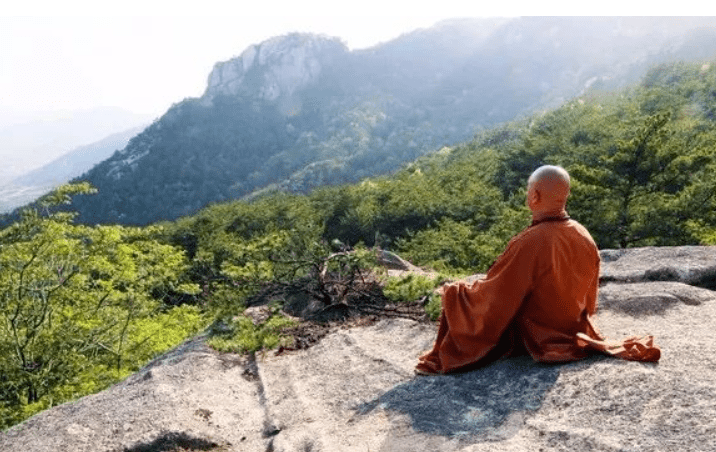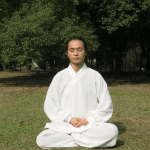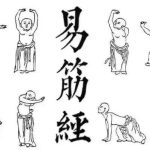Qigong is an ancient Chinese health practice passed down through generations. It focuses on adjusting breathing, body movements, and consciousness to promote physical well-being. There are many Qigong types, so, you may want to know:
- How many types of Qigong?
- What are they?
- Which one is good for beginners to choose?

There are generally 7 types of Qigong:
Quietude-based Qigong
It emphasizes relaxation, mental tranquility, and clarity, such as methods like Empty Brightness, Stillness into Oneness, True Qi Circulation, and Loose and Relaxed Techniques.
Intent-focused Qigong
It stresses the role of directing energy through intention, as seen in practices like Intentional Qi Gong and Circulating Qi Around the Body.
Guiding-based Qigong
It involves directing body movements, including practices like Tai Chi, Yi Jin Jing, Eight Pieces of Brocade, and Five Animal Frolics.
Breathing-based Qigong
It focuses on regulating the breath, including practices like Internal Nourishment, the Six Word Formula, and Sitting Meditation.
Comprehensive Qigong
It is a modern creation, combines mental focus with body movements or coordinates body movements with breathing techniques, like the Crane Soaring Method, Form and Spirit Method, Six Word Formula Health Qigong, and Guo Lin New Qigong.
Massage-based Qigong
It involves self-massage for health maintenance, acupoint tapping, and more.
Other Qigong encompasses various methods beyond the previously mentioned categories
such as health maintenance exercises, Sixteen Health Principles, Eye-Ear-Mouth Exercises, Swallowing Saliva Exercises, and Essence Strengthening Exercises.

Ten Recognized and Recommended Qigong Practices by Chinese Authorities For Beginners
Shaolin Yijinjing
Shaolin Yijinjing isn’t just one of the top ten Qigong practices but also one of Jin Yong’s six key protective martial arts skills. ‘Yi’ implies change, transformation, and enhancement, while ‘jin’ refers to tendons, bones, and muscles—soft tissues. Shaolin Yijinjing uses various body movements to modify or strengthen the body’s meridians, tendons, bones, and muscles.
Guide, Tutorials and Tips:
Wu Qin Xi
Created by the famous Eastern Han physician Hua Tuo, the Five Animal Frolics involves imitating the movements of bear, tiger, monkey, bird, and deer. These motions exercise various parts of the body, enhancing overall health with different focuses on different movements.
Guide, Tutorails and Tips
Shaolin Ba Duan Jin
Originating from the Song Dynasty, this fitness routine, according to Traditional Chinese Medicine, aids in tendon flexibility and bone strength, enhances vitality, promotes blood circulation, and harmonizes the functioning of internal organs. Practicing Shaolin Ba Duan Jin also alleviates fatigue and positively affects the nervous, cardiovascular, digestive, respiratory, and musculoskeletal systems, relieving shoulder, waist, and leg pains.
Six-Syllable Qi Gong
It involves exercising while silently pronouncing the sounds of six words: ‘Xu, He, Hu, Ba, Chui, Xi’ during exhalation. It aims to purify and cultivate positive energy in the body, eliminating impurities and cultivating vitality through controlled breathing in a relaxed state, which is essential for a balanced practice.
Guide, Tutorails and Tips
Tai Chi Chuan
It emphasizes continuous movements that engage the entire body, promoting flexibility in joints, tendons, and cartilage. It focuses on the interplay between emptiness and substance, enhancing body balance and agility. Tai Chi Chuan aids venous blood return to the heart through muscular relaxation and joint movements.
Guide, Tutorials and Tips:
Brightening Eyes Exercise
It is considered a health-preserving Qi Gong method. It improves vision and relieves fatigue through techniques that guide internal energy and massage acupoints. It’s a simple yet effective way to maintain eye health, drawing from the ancient essence of Wudang’s Brightening Eyes Exercise, known for its ability to clear the mind and improve eyesight with consistent practice.
Guide, Tutorials and Tips
Twelve Silk Brocades
The Twelve Silk Brocades is a fitness routine made up of twelve movements. It stands as a remarkable representation of ancient Chinese health practices, incorporating the essence of traditional culture to enhance life quality and well-being.
Guide, Tutorials and Tips
Grand Dance
Grand Dance, a legendary celebration before the time of the Yellow Emperor, was a form of royal dance to commemorate achievements. It’s essentially a physical activity showcasing the vital function of celebratory dance as a body workout.
Guide, Tutorials and Tips
Guiding Technique of Mawangdui
This method stands as the longest-recorded fitness practice in China and is hailed as a treasure of Chinese martial arts. It comprises graceful and ancient techniques that harmonize internal and external training, integrating self-cultivation, health preservation, entertainment, and aesthetics. Its fluid movements, simplicity, safety, and adaptability make it suitable for various practitioners.
Guide, Tutorials and Tips
Twelve Techniques of Guiding Health Preservation
These twelve techniques integrate traditional Chinese medicine theories of meridians, Yin-Yang, Five Elements, and the theory of Qi and Blood. They amalgamate guidance, physical exercise, and mental cultivation into a cohesive method for health preservation.
Guide, Tutorials and Tips


